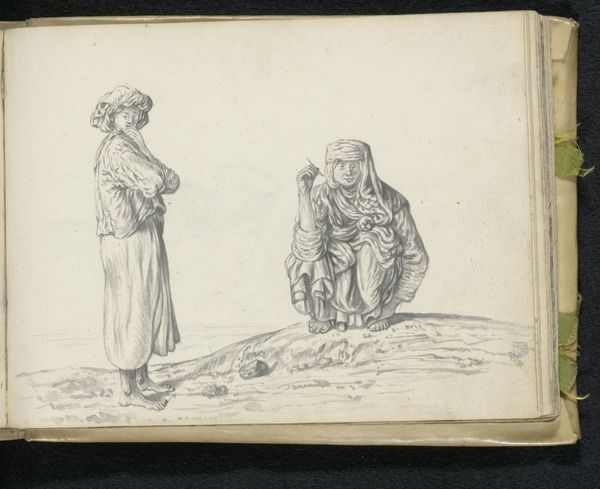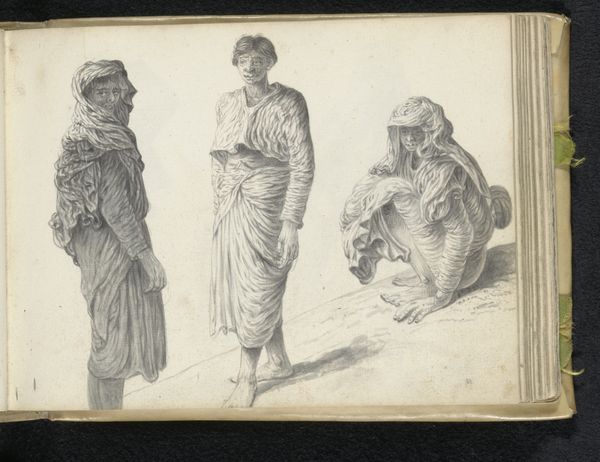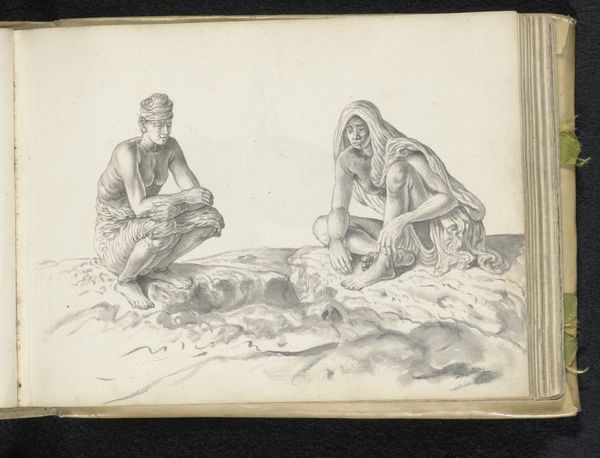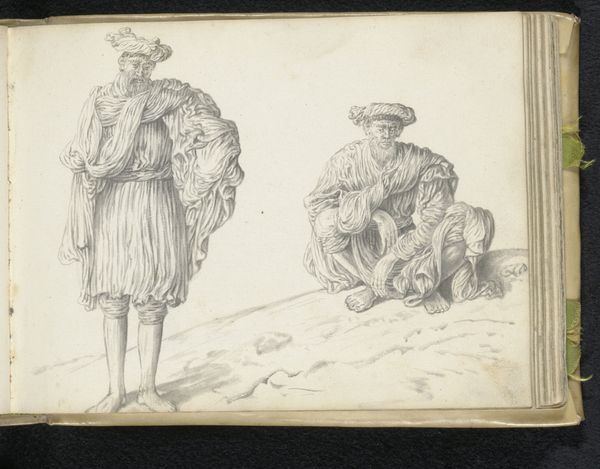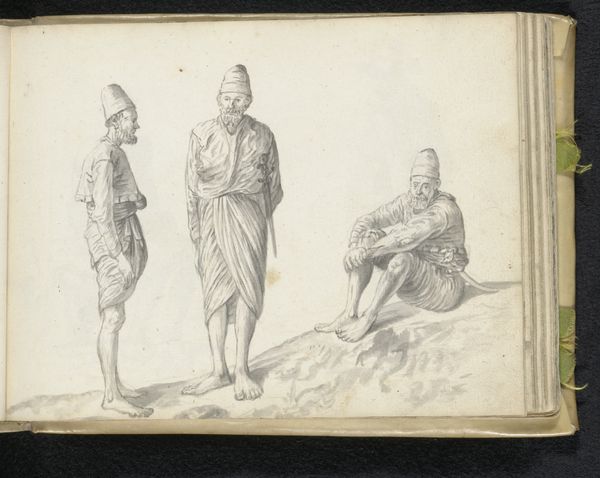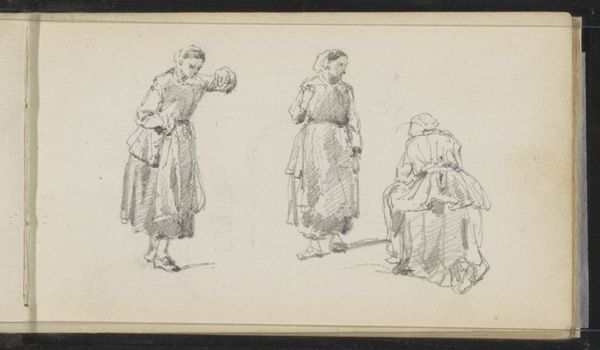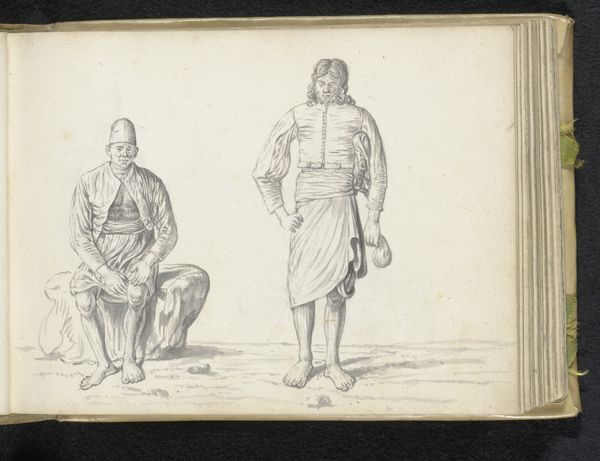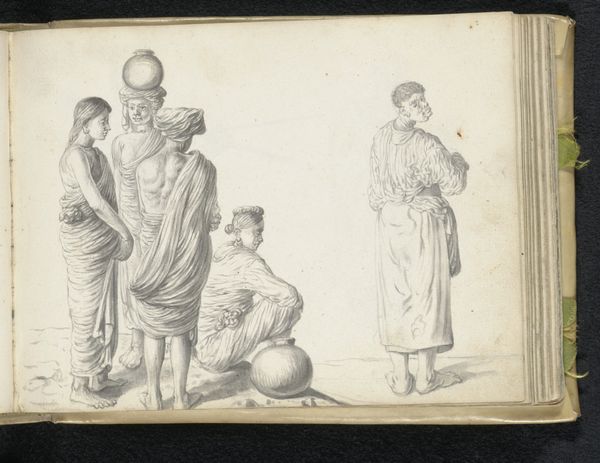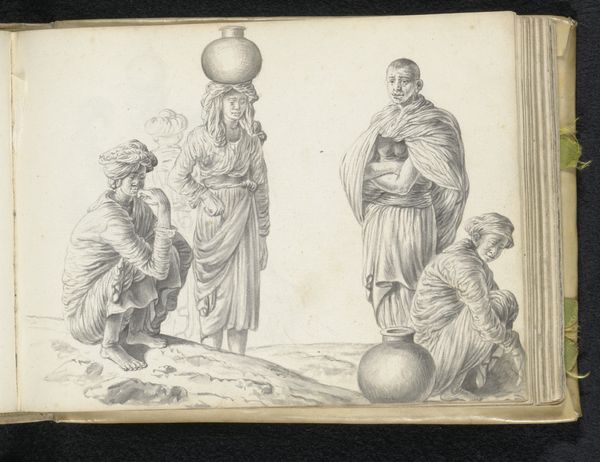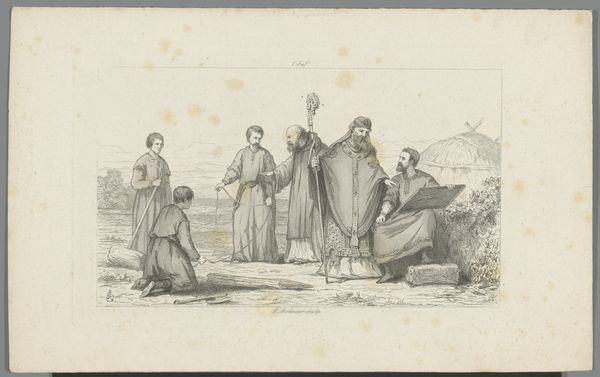
drawing, paper, pencil
#
portrait
#
drawing
#
aged paper
#
toned paper
#
light pencil work
#
dutch-golden-age
#
asian-art
#
sketch book
#
figuration
#
paper
#
personal sketchbook
#
sketchwork
#
coloured pencil
#
group-portraits
#
pencil
#
sketchbook drawing
#
genre-painting
#
storyboard and sketchbook work
#
sketchbook art
#
realism
Dimensions: height 148 mm, width 196 mm
Copyright: Rijks Museum: Open Domain
Esaias Boursse made this delicate graphite drawing of three Sinhalese women during his time with the Dutch East India Company in the 17th century. The simple medium allows for incredible detail, as can be seen in the way the fabric clings to the women's bodies, and in the subtle gradations of light and shadow. But it is not just a display of technical virtuosity. Boursse's choice of graphite, a readily available material, speaks to the context in which this work was created. As a company employee, Boursse was tasked with documenting the people and landscapes he encountered. This drawing, therefore, is not simply an artistic exercise, but also a form of colonial record-keeping. The artist was, in effect, a tool of empire. The image, made using such humble materials, reflects the complex relationship between art, labor, and the global economy of the time. Considering the material circumstances of its production allows us to understand the drawing's full significance, moving beyond questions of aesthetics to address the social and political forces that shaped its creation.
Comments
No comments
Be the first to comment and join the conversation on the ultimate creative platform.
